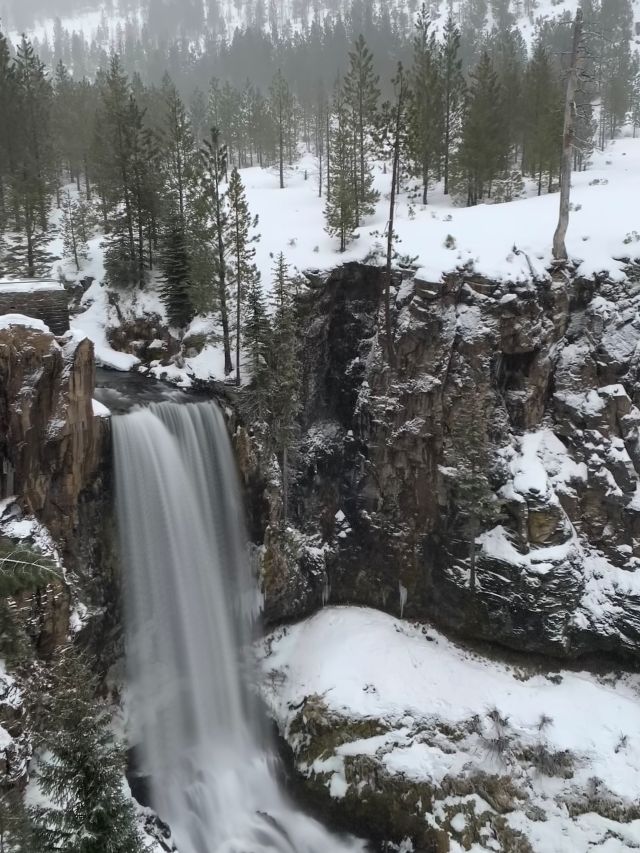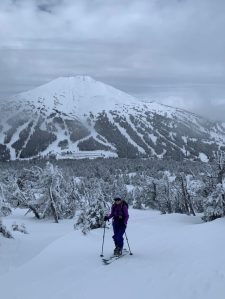Guest column: Central Oregon public land sales were stopped. What’s next?
Published 3:00 pm Thursday, July 17, 2025

- Tumalo Falls in winter. (Sami Godlove)
Living in Central Oregon, it’s easy to forget how fortunate we are to have such close access to public lands. We can mountain bike singletrack, stroll along a Wild & Scenic River, fish for trout, and ski volcanoes on public lands just minutes from Bend.
Public land — managed by the U.S. Forest Service or Bureau of Land Management — surrounds Bend, leaving endless opportunities to explore and recreate. I’ve lived in Bend for 23 of my 29 years of life, and it’s been this way for all of them. I could never imagine losing that access.
That is, until Sen. Mike Lee, R-Utah, introduced his bill.
Trending
Maybe you heard about it. It certainly caused an uproar across the nation, forcing Sen. Lee to ultimately pull his proposal from the Senate reconciliation bill (the so-called “big, beautiful bill”) that would have forced the sale of millions of acres of public lands across 11 states, including Oregon. Despite withdrawing the bill, Sen. Lee made it evident in a statement that he still isn’t done trying to sell our public lands.
Add that to other current threats to public lands, and a significant portion of our elected leaders seem to be attempting to make public lands a lot less public.
Public lands 101
In the simplest terms, public lands are lands and waters that are owned collectively by the public — all of us — and held in trust and managed by government agencies like the Forest Service, Bureau of Land Management, National Park Service, and the U.S. Fish and Wildlife Service.
While the vast majority of public lands are managed for multiple uses (e.g., recreation, conservation, and extraction), some areas have been designated and protected for their important ecological, recreational, historical, and cultural values. These are our National Parks, National Monuments, Wilderness Areas, Wild & Scenic Rivers, National Wildlife Refuges, and others.

With Mount Bachelor in the background, a skier pauses on Tumalo Mountain. (Sami Godlove)
It was these protected areas that were excluded from Sen. Lee’s public lands sell-off proposal. That left the remaining 250-plus million acres of public lands, mostly National Forest and Bureau of Land Management lands, vulnerable to immediate or future privatization had the original proposal gone through. That could have included public lands in Central Oregon like the Phil’s Trail network, the Cascade Lakes and Mount Bachelor, Tumalo Falls, Horse Ridge, and others. Fortunately for those of us who enjoy exploring public lands, these places remain public and open, for now.
In addition to the benefit of being a public land owner for simply living in the United States, we all also have a say in how these lands should be managed. The National Environmental Policy Act (NEPA) directs the government to inform and engage the public on proposed actions that might impact the environment and public lands. Public lands agencies also have their own regulations for including the public in management decisions. In short, the government must inform the public about decisions that will impact public lands, provide avenues for the public to provide input on those decisions, and take that input into account before finalizing the decision.
Current threats to public lands
Trending
While public lands sales dominated the news cycle, other notable proposals that would impact public access and oversight of public lands are also in motion.
At the end of June, the Department of Agriculture, which houses the Forest Service, and the Department of Interior, home to the Bureau of Land Management, announced their intent to change their NEPA regulations, reducing or eliminating the public review and oversight process for many projects that would occur on public lands.

Hikers take in the clear cool waters and surrounding forest at Fall River, located in southern Deschutes County. (Sami Godlove)
Similarly, the “Fix Our Forests Act,” a bill currently making its way through Congress, would also remove public oversight and involvement in certain logging and forestry projects on public lands across the country. This bill proposes to expand the use of “Categorical Exclusions” for logging projects, increasing the number and size of projects that are exempt from environmental and public review.
Common ground on our public lands
Public lands may be one of the few things that bring us all together. Sen. Lee certainly found that out when he was forced to kill his bill.
That bill ended up dying because millions of hunters, anglers, recreationists, and public lands lovers all vehemently spoke out against it. It died because Republican members of Congress from Montana, Oregon and Idaho joined Democrats in denouncing it. It died because Americans overwhelmingly believe that control of public lands belongs in public hands.
In fact, a 2025 poll commissioned by the Trust for Public Land found that 71% of Americans oppose these types of public land sales. Maybe it’s because of the opportunities and access to wide open spaces and incredible recreation opportunities, or because public lands provide clean air, clean drinking water, and wildlife habitat. Maybe it’s the knowledge that there are still places out there free from the relentless dispersal of sprawl and development, and that they should be kept that way.
I was certainly thankful for my public lands on a recent excursion to nearby Hosmer Lake to escape the 90-plus degree temperatures in Bend. A light breeze over the water kept my skin cool and the mosquitoes at bay as I glided along the shore of the upper lake. Schools of rainbow trout darted beneath me, and two osprey swirled overhead. I took a moment to look around. Public land in all directions.








